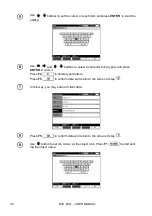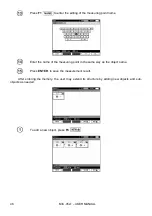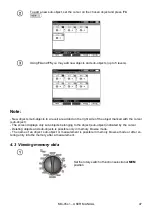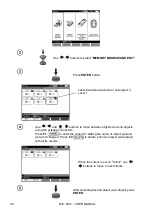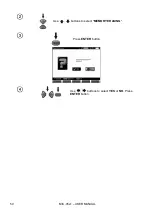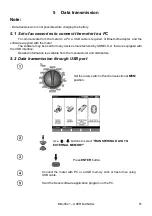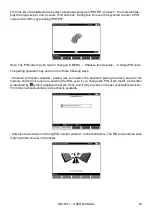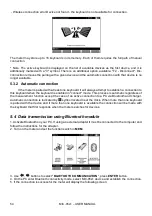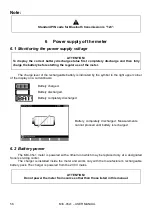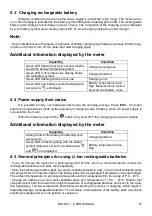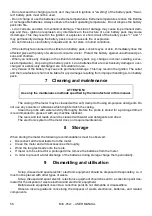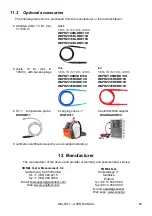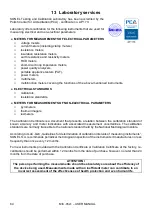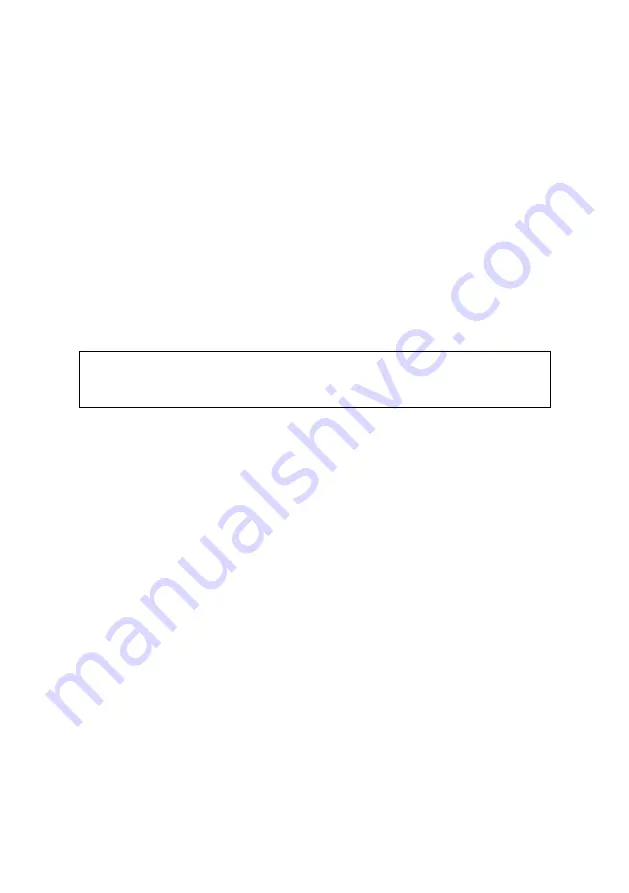
MIC-05s1
– USER MANUAL
58
- Do not exceed the charging current, as it may result in ignition or "swelling" of the battery pack. "Swol-
len" battery pack must not be used.
- Do not charge or use the batteries in extreme temperatures. Extreme temperatures reduce the lifetime
of rechargeable batteries. Always observe the rated operating temperature. Do not dispose the battery
pack into fire.
- Li-Ion cells are sensitive to mechanical damage. This kind of damage may cause its permanent dam-
age and thus - ignition or explosion. Any interference in the structure of Li-ion battery pack may cause
its damage. This may result in the ignition or explosion. A short-circuit of the battery poles "+" and "-"
may permanently damage the battery pack or even cause its fire or explosion.
- Do not immerse Li-Ion battery in liquids and do not store in humid conditions.
- If the electrolyte contained in the Lithium-Ion battery pack, contacts eyes or skin, immediately rinse the
affected place with plenty of water and consult a doctor. Protect the battery against unauthorised per-
sons and children.
- When you notice any changes in the Lithium-Ion battery pack (e.g. changes in colour, swelling, exces-
sive temperature), stop using the battery pack. Li-Ion batteries that are mechanically damaged, over-
charged or excessively discharged are not suitable for use.
- Any misuse of the battery may cause its permanent damage. This may result in the ignition. The seller
and the manufacturer shall not be liable for any damages resulting from improper handling Li-Ion battery
pack.
7
Cleaning and maintenance
ATTENTION!
Use only the maintenance methods specified by the manufacturer in this manual.
The casing of the meter may be cleaned with a soft, damp cloth using all-purpose detergents. Do
not use any solvents or abrasives which might scratch the casing.
Clean the probe with water and dry thoroughly. Before the probe is stored for a prolonged time it
is recommended to grease it with any machine lubricant.
The reels and test leads should be cleaned with water and detergents and dried.
The electronic system of the meter does not require maintenance.
8
Storage
When storing the meter the following recommendations must be observed:
Disconnect all the test leads from the meter.
Clean the meter and all its accessories thoroughly.
Wind the long test leads onto the reels.
If meter is to be stored for a prolonged time remove the batteries from the meter.
In order to prevent a total discharge of the batteries during storage charge them periodically.
9
Dismantling and utilisation
Scrap, disused and spent electric / electronic equipment should be disposed of responsibly, i.e. it
must not be placed with other types of waste.
Scrap, disused and spent electric / electronic equipment should be sent to a collection point des-
inated for the disposal of waste electrical and electronic equipment.
Before waste equipment is sent to a collection point do not dismantle or disassemble.
Observe local regulations concerning the disposal of waste electronics, batteries, and related
components.

